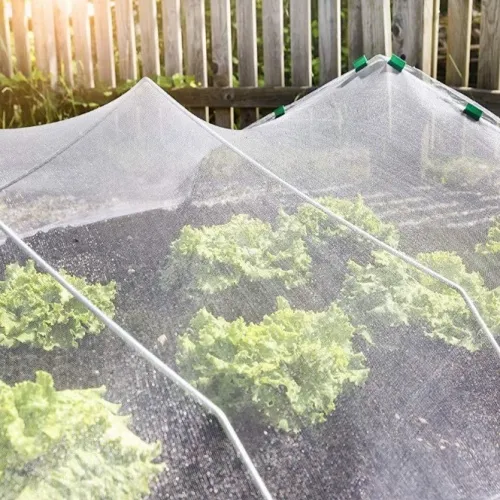-
 Afrikaans
Afrikaans -
 Albanian
Albanian -
 Amharic
Amharic -
 Arabic
Arabic -
 Armenian
Armenian -
 Azerbaijani
Azerbaijani -
 Basque
Basque -
 Belarusian
Belarusian -
 Bengali
Bengali -
 Bosnian
Bosnian -
 Bulgarian
Bulgarian -
 Catalan
Catalan -
 Cebuano
Cebuano -
 China
China -
 Corsican
Corsican -
 Croatian
Croatian -
 Czech
Czech -
 Danish
Danish -
 Dutch
Dutch -
 English
English -
 Esperanto
Esperanto -
 Estonian
Estonian -
 Finnish
Finnish -
 French
French -
 Frisian
Frisian -
 Galician
Galician -
 Georgian
Georgian -
 German
German -
 Greek
Greek -
 Gujarati
Gujarati -
 Haitian Creole
Haitian Creole -
 hausa
hausa -
 hawaiian
hawaiian -
 Hebrew
Hebrew -
 Hindi
Hindi -
 Miao
Miao -
 Hungarian
Hungarian -
 Icelandic
Icelandic -
 igbo
igbo -
 Indonesian
Indonesian -
 irish
irish -
 Italian
Italian -
 Japanese
Japanese -
 Javanese
Javanese -
 Kannada
Kannada -
 kazakh
kazakh -
 Khmer
Khmer -
 Rwandese
Rwandese -
 Korean
Korean -
 Kurdish
Kurdish -
 Kyrgyz
Kyrgyz -
 Lao
Lao -
 Latin
Latin -
 Latvian
Latvian -
 Lithuanian
Lithuanian -
 Luxembourgish
Luxembourgish -
 Macedonian
Macedonian -
 Malgashi
Malgashi -
 Malay
Malay -
 Malayalam
Malayalam -
 Maltese
Maltese -
 Maori
Maori -
 Marathi
Marathi -
 Mongolian
Mongolian -
 Myanmar
Myanmar -
 Nepali
Nepali -
 Norwegian
Norwegian -
 Norwegian
Norwegian -
 Occitan
Occitan -
 Pashto
Pashto -
 Persian
Persian -
 Polish
Polish -
 Portuguese
Portuguese -
 Punjabi
Punjabi -
 Romanian
Romanian -
 Russian
Russian -
 Samoan
Samoan -
 Scottish Gaelic
Scottish Gaelic -
 Serbian
Serbian -
 Sesotho
Sesotho -
 Shona
Shona -
 Sindhi
Sindhi -
 Sinhala
Sinhala -
 Slovak
Slovak -
 Slovenian
Slovenian -
 Somali
Somali -
 Spanish
Spanish -
 Sundanese
Sundanese -
 Swahili
Swahili -
 Swedish
Swedish -
 Tagalog
Tagalog -
 Tajik
Tajik -
 Tamil
Tamil -
 Tatar
Tatar -
 Telugu
Telugu -
 Thai
Thai -
 Turkish
Turkish -
 Turkmen
Turkmen -
 Ukrainian
Ukrainian -
 Urdu
Urdu -
 Uighur
Uighur -
 Uzbek
Uzbek -
 Vietnamese
Vietnamese -
 Welsh
Welsh -
 Bantu
Bantu -
 Yiddish
Yiddish -
 Yoruba
Yoruba -
 Zulu
Zulu
Exploring the Impact of Plastic Nets on Marine Life and Ecosystems
The Rise of Plastic Nets A Double-Edged Sword
Plastic nets have become a ubiquitous component in various industries and applications, from agriculture to fishing and packaging. These synthetic meshes are made from different types of plastics, primarily polypropylene and polyethylene, and are praised for their durability, lightweight nature, and versatility. However, while plastic nets play a crucial role in modern practices, their environmental impact raises critical questions regarding sustainability and waste management.
Agricultural Applications
In agriculture, plastic nets are often employed for crop protection, windbreaks, and shading. Farmers utilize these nets to shield delicate plants from harsh weather conditions and pests, enhancing crop yield and quality. For instance, insect nets protect crops from harmful insects while allowing sunlight and rain to penetrate, creating an optimal growing environment. Additionally, shade nets can control temperature and reduce water evaporation, which is particularly beneficial in arid regions.
However, the extensive use of plastic nets in agriculture presents a significant challenge after their functional lifespan, many of these nets are discarded or poorly managed. Agricultural plastic waste is rapidly accumulating, leading to thoughts concerning soil degradation and pollution. The breakdown of plastic nets into microplastics poses a further risk, potentially leaching harmful chemicals into the soil and waterways, which can affect both flora and fauna.
Fishing Industry Concerns
In the fishing industry, plastic nets, commonly known as “ghost nets,” pose a grave threat to marine life
. These nets, which are often lost or abandoned in oceans, continue to ensnare fish, sea turtles, and other marine organisms, leading to significant ecological disruptions. Ghost fishing—a phenomenon where these discarded nets catch and kill marine species unintentionally—has drawn increasing concern from environmental advocates and oceanic researchers.plastic nets

Efforts to address this issue include raising awareness about responsible fishing practices and promoting the retrieval of lost nets. Many organizations now participate in initiatives to clean up oceans and raise funds for alternative fishing gear made from sustainable materials. However, the challenge remains substantial. The sheer volume of plastics in our oceans and waterways calls for more robust legislative measures and collective action from industries, governments, and consumers alike.
Alternative Solutions
The environmental impact of plastic nets has sparked innovation in the development of alternative materials. Researchers are exploring biodegradable options made from natural fibers, such as jute or hemp, which can serve similar purposes without the lasting consequences associated with plastic. These alternatives, while promising, often come with trade-offs regarding performance and cost, which can deter widespread adoption.
Moreover, recycling initiatives have emerged to manage end-of-life plastic nets. Programs that facilitate the collection, processing, and repurposing of agricultural and fishing nets are becoming increasingly important. Some companies are leading the way by turning discarded nets into new products, thereby reducing overall plastic waste.
A Call for Responsibility
As we navigate the advantages and disadvantages of plastic nets, a critical takeaway emerges awareness and responsibility are paramount. Stakeholders, including manufacturers, consumers, and policymakers, must collaborate to find solutions that address the environmental ramifications of plastic use. Initiatives that combine recycling, sustainable production, and education about the proper disposal of plastic nets can lead to more environmentally-friendly practices.
In conclusion, plastic nets serve essential functions across several industries, yet their environmental implications cannot be ignored. Balancing the functional benefits of plastic nets with sustainable management practices is imperative. By prioritizing innovation and responsible use, we can mitigate the adverse effects of plastic while continuing to enjoy the advantages that these materials offer. The future likely depends on our ability to adapt and evolve our practices, ensuring a healthier planet for generations to come.
-
Shipping Plastic Bags for Every NeedNewsJul.24,2025
-
Safety Netting: Your Shield in ConstructionNewsJul.24,2025
-
Plastic Mesh Netting for Everyday UseNewsJul.24,2025
-
Nylon Netting for Every UseNewsJul.24,2025
-
Mesh Breeder Box for Fish TanksNewsJul.24,2025
-
Expanded Steel Mesh Offers Durable VersatilityNewsJul.24,2025











